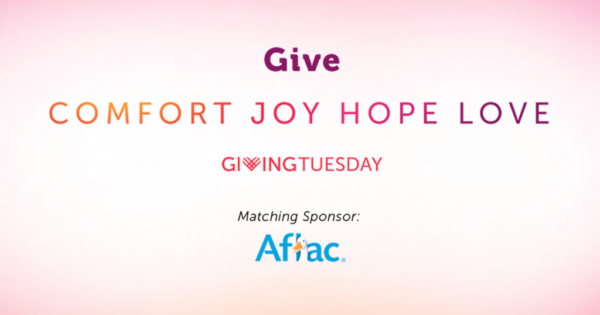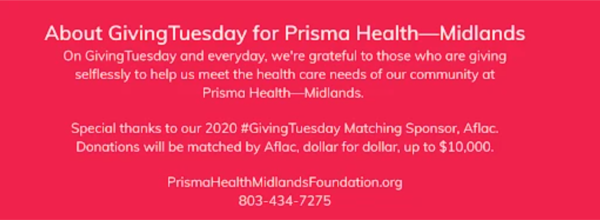Finding the right corporate partner for your Giving Tuesday campaign requires research, preparation, and persistence. Nonprofits raised more than $2.47 billion in the U.S. alone on Giving Tuesday in 2020, which was a 25% year-over-year increase.
As the largest fundraising day of the year only continues to grow, now is the time for your organization to begin mapping out its strategy to make the most out of your December.
Types of Nonprofit Corporate Partnerships
Corporate partnerships can take many forms, each offering a unique set of mutual benefits:
- Large Financial Gifts and Matching Campaigns. Uses a large gift to encourage additional gifts in a time-based initiative, essentially doubling the impact of a corporation’s contribution.
- Campaign and Cause Marketing. A financial contribution is exchanged for brand recognition and exposure.
- In-Kind Sponsorship. Contributions in the form of physical goods, services, or expertise with the goal to create a connection between your organization and the corporation.
- Employee Giving and Volunteer Programs. Offers an opportunity for the corporation to demonstrate its values and company culture by providing a way for employees to get involved with a nonprofit’s mission.
Matching campaigns have proved to be the most popular type of corporate partnership for Giving Tuesday due to the large impact they can make on an organization’s year-end fundraising revenue, but it’s important to remember that campaign matches aren’t limited only to December. Roughly $2 to $3 billion is donated through matching gift programs annually.
It’s a common myth that matching campaigns are seasonal. Leveraging this strategy throughout other months of the year can urge supporters to take action in order to stretch their dollar and ultimately raise more money for your mission.
How to Find the Right Corporate Match for Giving Tuesday
To move toward your end-of-year fundraising goals and establish a deep connection with the right corporation, consider these three tips for pitching a Giving Tuesday corporate match.
1. Identify Your Mission
It’s important to know what your organization stands for before seeking out a nonprofit corporate partnership. To help narrow down the types of companies you’d best align with, identify your core values, company culture, and brand image, and then brainstorm a list of potential partners who you believe could complement each of those areas.
Know Your Audience
In addition to solidifying your organization’s goals, understand who your audience is and what their values are. What companies do they engage with, and why? A corporate match can enhance your campaign if your donors feel excited about the partnership, but it can also potentially deter donors if they feel the company doesn’t reflect their values.
Recognize Your Unique Value
Identify what makes your organization unique and use it as a selling point when pitching your partnership. Clarify why a corporation would benefit from this collaboration, including things like increased brand visibility and exposure to a unique donor base.
Your nonprofit brings something special to the table that corporations are looking for, and vice versa, so come in prepared with these reasons to support your ask.
2. Choose a Good Partner
Once you’ve identified who you are and what you stand for, it’s crucial to choose a company that aligns with the goal of your organization. The right partnership could extend beyond Giving Tuesday for future donations and become a mutually beneficial relationship for years to come.
Prior to contacting a company, research their background, key achievements, future plans, and important goals. For example, a pet specialty retailer may be inclined to donate to an animal rescue organization.
Consider a Local Partner
If you’re not sure where to start, look within your local community. Giving to local nonprofits shows customers that the corporation cares about their community and the issues that affect them. This hometown partnership could build positive press for the corporation while amplifying the impact of your organization’s mission.
Match Your Demographic Profiles
It’s also important to match your supporters with the company’s customers. Aligning demographics is another telling way to determine if a partner is going to be a good fit.
For example, if you are a health-focused organization that caters to women ages 25 to 45, you might look to partner with a specialty grocery store with a customer base that matches that demographic. In this partnership, you benefit from meeting their customers and they benefit from meeting your pre-existing supporters. When you align precisely and create a mutually beneficial relationship, you may land a bigger ally than you initially imagined.
3. Come Prepared
Before reaching out to a potential corporate partner, prepare everything you’ll need ahead of time. This should include your materials for initial outreach, exploratory conversations, the pitch, and examples of how you will highlight the company in your campaign.
Nail the Initial Outreach
Set the tone for a potential partnership by telling your nonprofit’s story. Stories are how human beings learn and make connections, and have always been an integral part of marketing for that reason. Think of this initial conversation as an opportunity to market your organization and forge an emotional connection.
In our guide, The Guide to Nonprofit Storytelling, we’ll help you discover and tell your nonprofit’s story in a way that engages corporate partners and motivates them to get involved.
Practice the Pitch
Practice your public speaking before the pitch to ensure that you’re delivering your message with confidence. Your presence and delivery matter just as much as the material you’re presenting, so don’t forget to run through it a few times before the big day.
Here are a few recommendations to keep in mind:
- Maintain good posture
- Don’t memorize
- Control your breathing and talk slowly
- Occupy more space with open body posture
- Don’t let a mistake trip you up
For more tips and tricks to nail your pitch, download The Guide to Pitching Corporate Sponsors.
Design a Mock Landing Page
Convey a clear picture of how a partnership could boost the company’s visibility by providing specific, co-branded examples. Show where you’re going to include their logo and what key messaging you’re going to include on your landing page, just like Prisma Health Midlands Foundation did when partnering with Aflac for Giving Tuesday.


No matter how large or small your nonprofit organization is, you are capable of securing a corporate partner in time for Giving Tuesday. Increase your chances of nabbing a partner and implementing a successful giving program by starting early and establishing a mutually beneficial relationship. By forming a strong connection from the start, your fundraising potential is limitless.
This blog post by Hannah Durbin was published on Classy. Read the original here.

